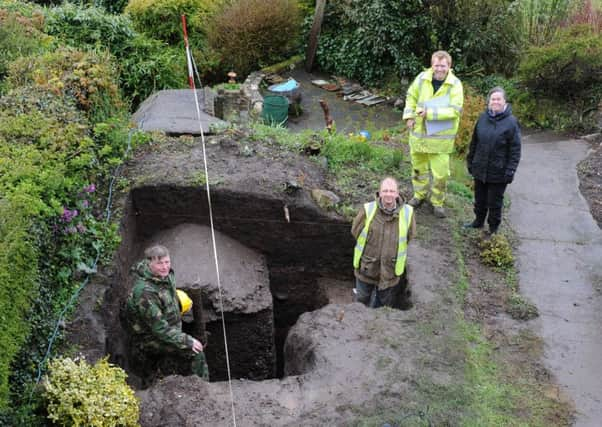Deluxe wartime shelter uncovered in back garden


The Wilmot Fortress – complete with protective concrete 11 inches thick – was recently uncovered in the garden of retired archaeologist Lindsay Allason-Jones.
She moved into the property on Castle Terrace in Berwick in the belief there was an Anderson shelter in the garden. However, it turned out to be a deluxe shelter designed to keep out all but direct hits from German bombs. The nearby Royal Border Bridge was considered a possible target.
Advertisement
Hide AdAdvertisement
Hide AdLindsay explained: “I moved to Berwick in October last year and very quickly decided that the air raid shelter in the garden was in the way of improvements.
“I was also under the impression it was an Anderson shelter, in which case it would have been made just of corrugated iron. As these things were put in in 1938/9, I was concerned it might collapse with me on top of it as I gardened.
“As I am a retired museum archaeologist, I realised that this would be a good project for students and arranged for three postgraduates from Newcastle University to come up to stay with me for a week to expose the shelter so that Beamish Museum would be able to come up to assess its condition with a view to acquiring it for their planned 1950s town.
“As it is, it turns out not to be an ephemeral Anderson shelter but something much more substantial and was built to last.
Advertisement
Hide AdAdvertisement
Hide Ad“The owner of the property in 1939 appears to have been Major Alexander Steven, the then editor of the Berwickshire News. He was clearly a man who knew how to build an air raid shelter!”
The house used to belong to Eileen Baxendale.
“I’m told the Baxendale children used to use it as a den some 30 years ago,” said Lindsay. “We didn’t find much in it, apart from an old tin bath and a children’s giraffe cup!”
She would love to find out more about Major Steven’s background.
“We assume he had a military background and know he was a major in 1923 so probably had some involvement in World War One,” she said. “Maybe that’s why he went to such great lengths in building this shelter.”